cooldfuz1on
Power Member
Philips has unveiled its new European TV line-up for the first half of 2016. This year, the company will focus on 4K, HDR, Ambilight and Android TV. A new 7601 range performs almost like the previous 9 series flagship, says Philips.
2016 TVs from Philips
In 2016, the company will completely abandon 3D and curved TVs. Almost no one buys them, the company argues. Instead TP Vision, which owns the Philips TV brand in Europe, will focus on 4K and HDR (high dynamic range), which has seen strong industry support.
The two new 8601 and 8901 (AmbiLux) ranges that were announced at IFA 2015 in September will be part of the European 2016 line-up. New TVs are instead coming in the mid-range 7 series and down.
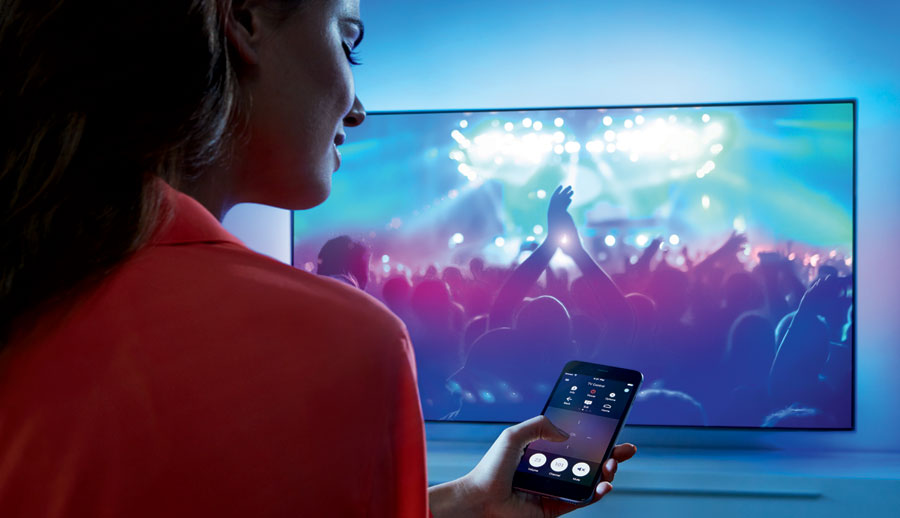
The most interesting addition to the line-up is arguably the 7601 range, which employs the same picture technologies as the previous 9 series flagship TV. 7601 offers full array local dimming (FALD) with 128 dimming zones. The best part is that it will be significantly cheaper than the 9 series.
The use of FALD makes the TV somewhat thicker than the other TVs but more importantly it improves contrast and HDR picture quality. 7601 is also capable of reproducing better colors through wide color gamut support. 7601 will be available only in 65”.
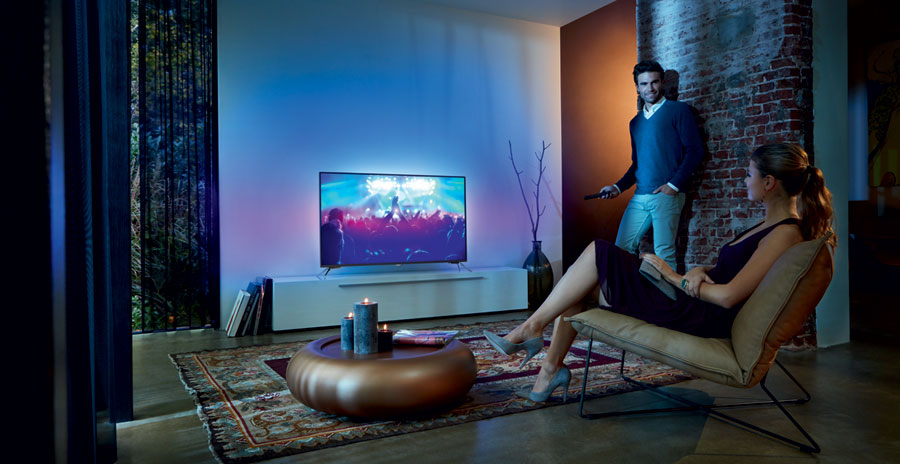
The next range is 7101, which will be available in 49 to 75” sizes. It offers Ultra HD and a more limited form of HDR since it switches to edge LED. The advantage of edge LED is of course lower costs and a thinner, more elegant TV. The 7181 range will be technically identical to 7101 but offer more powerful speakers.
In the 6 series we can look forward to a new 6501 range, which will exist in several different variants so each retail chains can claim to sell an exclusive model. It will offer Ultra HD and limited HDR support. These TV actually have backlit LED, which makes them thicker. However, they offer no local dimming capabilities.
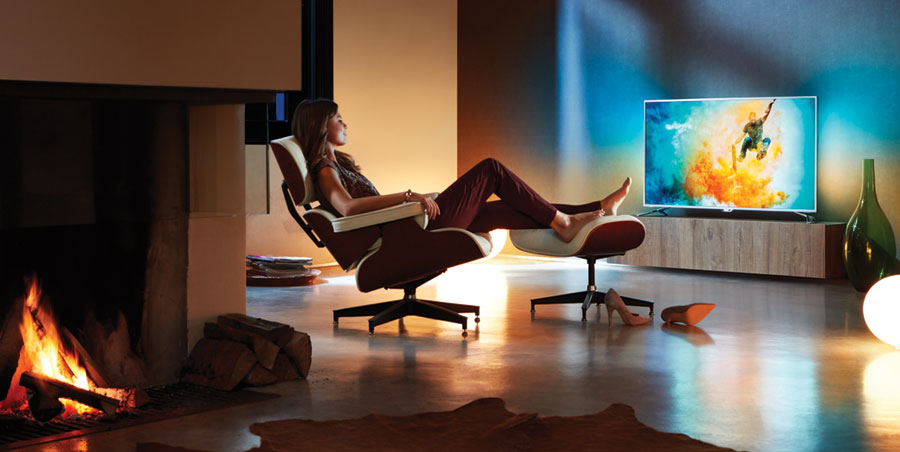
The step-down model is 6401, which still offers Ultra HD and limited HDR. 6101 has Ultra HD but not HDR. A new 5501 is a Full HD model.
None of Philips’ new TVs meet the demands for "UHD Premium”. The most capable models can reach 700 nits peak brightness (1000 nits required for LCD under the certification) and do not meet the color gamut specification (minimum 90% DCI-P3) either. Philips says that its TVs labeled with "Premium color” achieve approximately "85% of wide color gamut”, which refers to the DCI-P3 gamut.
Android TV and Ambilight
For over a decade, Philips has positioned Ambilight as one of the unique features of its TVs, and this year is no exception.
Everything from 6401 and up will offer Ambilight, and as you move up in price you go from 2-sided Ambilight to 4-sided Ambilight. The most expensive TV in the 2016 range takes Ambilight to the next level with AmbiLux, which uses pico projectors to illuminate the wall behind the screen.
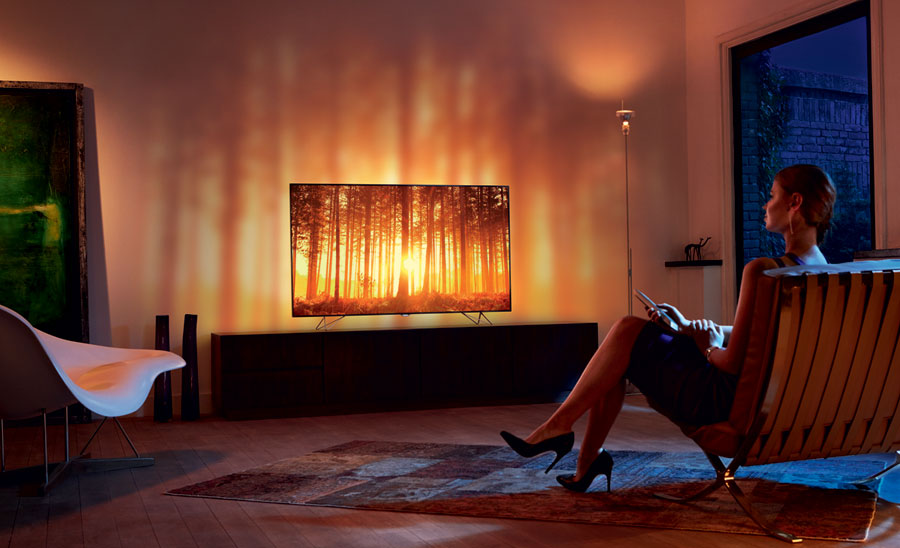
Android TV is another big theme in 2016. Unlike its competitor from Japan Sony, who has excluded Android TV from its HD models, Philips will continue to offer value-for-money HD TVs with Google’s new operating system. All TVs from 5501 and up will offer Android TV.
As you move up in price class you will get faster quad-core processors and more storage for apps and games. The cheapest TVs have 8GB of storage, whereas the mid-range and high-end TVs have 16GB. It is possible to extend that by connecting a USB hard drive. The 8 series TVs also feature twin-tuners.
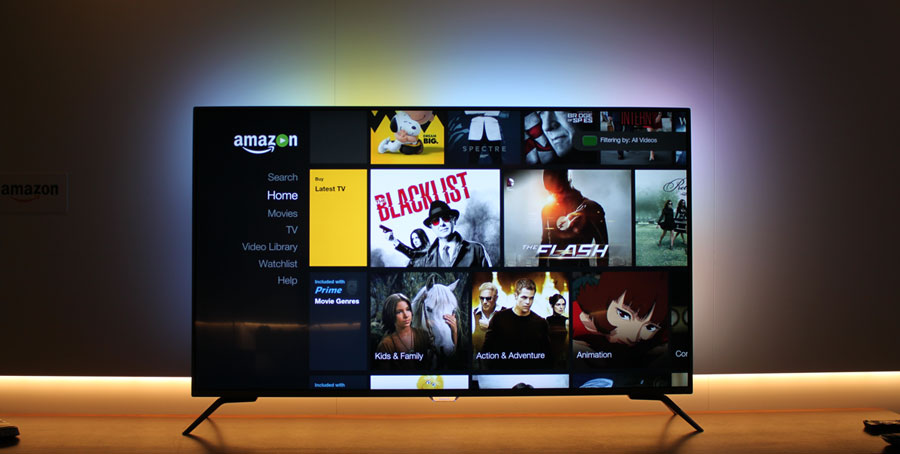
TP Vision told FlatpanelsHD that all of the new TVs will ship with Android TV 5.1 but that a software update will be released later to bring the TVs up to speed with Android TV 6.0. The company would not comment on a specific date. The TVs on display in Brussels all ran 5.1 so we cannot comment on performance.
A new thinner remote control will continue to offer a full QWERTY keyboard on the back. The button layout has changed and as you might have noticed there is a big fat Netflix button in the middle.
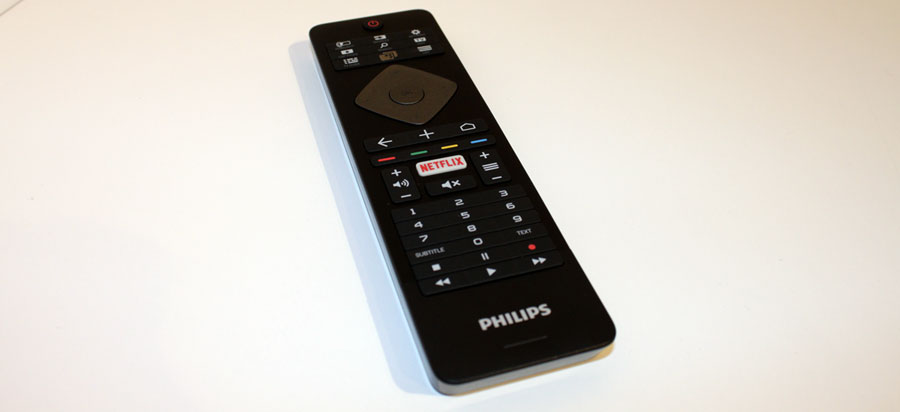
The new 8 series TVs are already available throughout Europe. The rest of the new 2016 TVs will be available from the second quarter of 2016. No pricing details were announced. In the second half of 2016 Philips will launch its first OLED TV.
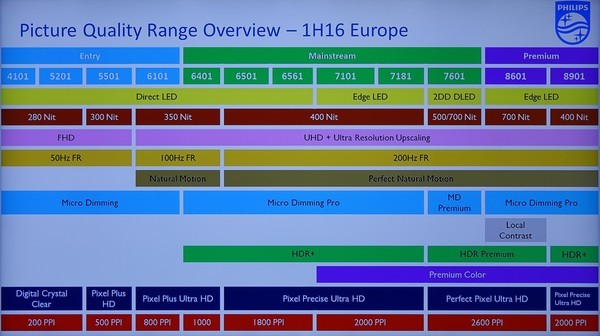

key features of the Philips TV 65PUS7601:
• Backlight System Direct LED Local Dimming
• Video Processing Perfect Pixel HD Engine Ultra
• Treatment Micro Dimming Premium
• Motion Perfect Natural Motion Compensation
• LCD Panel Ultra HD
• Video Processing 2600 Hz PPI
• Native 10-bit LCD Panel VA 100 Hz
• HDR Premium: 700 nits in peak, average 500 nits
• HDR Upscaling
• Premium Color Technology (WCG, Wide Color Gamut)
• Ultra Resolution Function
• Dual tuner DVB-T / DVB-C / DVB-S 2
• Compatibility HEVC (broadcast / IP )
• Supports Miracast
• Compatible HbbTV
• Smart Screen Function
• Smart TV Android 6.0 Marshmallow
• Google Cast Functionality
• 16 GB integrated Flash memory for application installation (expandable to 128 GB via USB)
• Access to services Les Echos, VOD Video Futur, Netflix, Spotify, Catch-Up TV ...
• Spotify Connect Certification
• Media Gateway Function UPnP ( DLNA )
• Function Wi-Fi ac
• Processor Quad Core
• Two inputs HDMI 2.0a
• Supports HDCP 2.2
• Ambilight system 3 (active right, left and top of the screen)
• Function Ambilight + Hue
• Methods Ambilight Gaming Mode (extremely short latency) and Ambilight Music
• Total power of 30 W RMS
• Remote control with keyboard, touch pad central button for direct access to Netflix and microphone to use the Voice Search function
• Energy label A
key features of the Philips TV PUS7181:
• Backlight system LED Edge Local Dimming
• Video Processing Engine Pixel Precise HD Ultra
• Treatment Micro Dimming Pro
• Motion Perfect Natural Motion Compensation
• LCD Panel Ultra HD
• Video Processing 2000 Hz PPI
• Native 10-bit LCD Panel VA 100 Hz
• HDR +: 400 nits in peak
• HDR Upscaling
• Premium Color Technology (WCG, Wide Color Gamut)
• Ultra Resolution Function
• Dual tuner DVB-T / DVB-C / DVB-S 2
• Compatibility HEVC (broadcast / IP )
• Supports Miracast
• Compatible HbbTV
• Smart Screen Function
• Smart TV Android 6.0 Marshmallow
• Google Cast Functionality
• 16 GB integrated Flash memory for application installation (expandable to 128 GB via USB)
• Access to services Les Echos, VOD Video Futur, Netflix, Spotify, Catch-Up TV ...
• Spotify Connect Certification
• Media Gateway Function UPnP ( DLNA )
• Function Wi-Fi ac
• Processor Quad Core
• Two inputs HDMI 2.0a
• Supports HDCP 2.2
• Ambilight system 3 (active right, left and top of the screen)
• Function Ambilight + Hue
• Methods Ambilight Gaming Mode (extremely short latency) and Ambilight Music
• Remote control with keyboard, Touch Pad central, key for direct access to Netflix
• Energy label A +
Key features of the Philips TV PUS 6501 / PUS 6521:
• Direct LED Backlight System Global Dimming
• Video Processing Engine Pixel Precise HD Ultra
• Treatment Micro Dimming Pro
• Motion Perfect Natural Motion Compensation
• Ultra HD LCD Panel
• Video Processing 1800 Hz PPI
• Native 10-bit LCD Panel VA 100 Hz
• HDR +: 400 nits in peak
• HDR Upscaling
• Ultra Resolution Function
• Dual tuner DVB-T / DVB-C / DVB-S2
• Compatibility HEVC (broadcast / IP)
• Miracast compatibility
• Compatibility HBBTV
• Smart Screen Function
• Smart TV Android 6.0 Marshmallow
• Google Cast Functionality
• 16 GB integrated Flash memory for application installation (expandable to 128 GB via USB)
• Access to services Echoes, VOD Video Futur, Netflix, Spotify, Catch-Up TV ...
• Spotify Connect Certification
• UPnP media gateway function (DLNA)
• Processor Quad Core
• Two HDMI 2.0a
• HDCP compatibility 2.2
• Ambilight system 2 (active right and left)
• Ambilight function Hue +
• Ambilight modes Gaming Mode (extremely short latency) and Ambilight Music
• Total power of 20 W RMS
• Remote control with keyboard, Touch Pad central, key for direct access to Netflix
• Energy label A +
• 899€ for Philips 43PUS6501 (43 '', 124 cm)
• 1,099€ for Philips 49PUS6501 (49 '', 124 cm)
• 1,399€ for Philips 55PUS6501 (55 '', 109 cm)
• 1,999€ for Philips 65PUS6521 (65 '', 165 cm)
Availability still scheduled for early April.
2016 TVs from Philips
In 2016, the company will completely abandon 3D and curved TVs. Almost no one buys them, the company argues. Instead TP Vision, which owns the Philips TV brand in Europe, will focus on 4K and HDR (high dynamic range), which has seen strong industry support.
The two new 8601 and 8901 (AmbiLux) ranges that were announced at IFA 2015 in September will be part of the European 2016 line-up. New TVs are instead coming in the mid-range 7 series and down.

The most interesting addition to the line-up is arguably the 7601 range, which employs the same picture technologies as the previous 9 series flagship TV. 7601 offers full array local dimming (FALD) with 128 dimming zones. The best part is that it will be significantly cheaper than the 9 series.
The use of FALD makes the TV somewhat thicker than the other TVs but more importantly it improves contrast and HDR picture quality. 7601 is also capable of reproducing better colors through wide color gamut support. 7601 will be available only in 65”.

The next range is 7101, which will be available in 49 to 75” sizes. It offers Ultra HD and a more limited form of HDR since it switches to edge LED. The advantage of edge LED is of course lower costs and a thinner, more elegant TV. The 7181 range will be technically identical to 7101 but offer more powerful speakers.
In the 6 series we can look forward to a new 6501 range, which will exist in several different variants so each retail chains can claim to sell an exclusive model. It will offer Ultra HD and limited HDR support. These TV actually have backlit LED, which makes them thicker. However, they offer no local dimming capabilities.

The step-down model is 6401, which still offers Ultra HD and limited HDR. 6101 has Ultra HD but not HDR. A new 5501 is a Full HD model.
None of Philips’ new TVs meet the demands for "UHD Premium”. The most capable models can reach 700 nits peak brightness (1000 nits required for LCD under the certification) and do not meet the color gamut specification (minimum 90% DCI-P3) either. Philips says that its TVs labeled with "Premium color” achieve approximately "85% of wide color gamut”, which refers to the DCI-P3 gamut.
Android TV and Ambilight
For over a decade, Philips has positioned Ambilight as one of the unique features of its TVs, and this year is no exception.
Everything from 6401 and up will offer Ambilight, and as you move up in price you go from 2-sided Ambilight to 4-sided Ambilight. The most expensive TV in the 2016 range takes Ambilight to the next level with AmbiLux, which uses pico projectors to illuminate the wall behind the screen.

Android TV is another big theme in 2016. Unlike its competitor from Japan Sony, who has excluded Android TV from its HD models, Philips will continue to offer value-for-money HD TVs with Google’s new operating system. All TVs from 5501 and up will offer Android TV.
As you move up in price class you will get faster quad-core processors and more storage for apps and games. The cheapest TVs have 8GB of storage, whereas the mid-range and high-end TVs have 16GB. It is possible to extend that by connecting a USB hard drive. The 8 series TVs also feature twin-tuners.

TP Vision told FlatpanelsHD that all of the new TVs will ship with Android TV 5.1 but that a software update will be released later to bring the TVs up to speed with Android TV 6.0. The company would not comment on a specific date. The TVs on display in Brussels all ran 5.1 so we cannot comment on performance.
A new thinner remote control will continue to offer a full QWERTY keyboard on the back. The button layout has changed and as you might have noticed there is a big fat Netflix button in the middle.

The new 8 series TVs are already available throughout Europe. The rest of the new 2016 TVs will be available from the second quarter of 2016. No pricing details were announced. In the second half of 2016 Philips will launch its first OLED TV.


key features of the Philips TV 65PUS7601:
• Backlight System Direct LED Local Dimming
• Video Processing Perfect Pixel HD Engine Ultra
• Treatment Micro Dimming Premium
• Motion Perfect Natural Motion Compensation
• LCD Panel Ultra HD
• Video Processing 2600 Hz PPI
• Native 10-bit LCD Panel VA 100 Hz
• HDR Premium: 700 nits in peak, average 500 nits
• HDR Upscaling
• Premium Color Technology (WCG, Wide Color Gamut)
• Ultra Resolution Function
• Dual tuner DVB-T / DVB-C / DVB-S 2
• Compatibility HEVC (broadcast / IP )
• Supports Miracast
• Compatible HbbTV
• Smart Screen Function
• Smart TV Android 6.0 Marshmallow
• Google Cast Functionality
• 16 GB integrated Flash memory for application installation (expandable to 128 GB via USB)
• Access to services Les Echos, VOD Video Futur, Netflix, Spotify, Catch-Up TV ...
• Spotify Connect Certification
• Media Gateway Function UPnP ( DLNA )
• Function Wi-Fi ac
• Processor Quad Core
• Two inputs HDMI 2.0a
• Supports HDCP 2.2
• Ambilight system 3 (active right, left and top of the screen)
• Function Ambilight + Hue
• Methods Ambilight Gaming Mode (extremely short latency) and Ambilight Music
• Total power of 30 W RMS
• Remote control with keyboard, touch pad central button for direct access to Netflix and microphone to use the Voice Search function
• Energy label A
key features of the Philips TV PUS7181:
• Backlight system LED Edge Local Dimming
• Video Processing Engine Pixel Precise HD Ultra
• Treatment Micro Dimming Pro
• Motion Perfect Natural Motion Compensation
• LCD Panel Ultra HD
• Video Processing 2000 Hz PPI
• Native 10-bit LCD Panel VA 100 Hz
• HDR +: 400 nits in peak
• HDR Upscaling
• Premium Color Technology (WCG, Wide Color Gamut)
• Ultra Resolution Function
• Dual tuner DVB-T / DVB-C / DVB-S 2
• Compatibility HEVC (broadcast / IP )
• Supports Miracast
• Compatible HbbTV
• Smart Screen Function
• Smart TV Android 6.0 Marshmallow
• Google Cast Functionality
• 16 GB integrated Flash memory for application installation (expandable to 128 GB via USB)
• Access to services Les Echos, VOD Video Futur, Netflix, Spotify, Catch-Up TV ...
• Spotify Connect Certification
• Media Gateway Function UPnP ( DLNA )
• Function Wi-Fi ac
• Processor Quad Core
• Two inputs HDMI 2.0a
• Supports HDCP 2.2
• Ambilight system 3 (active right, left and top of the screen)
• Function Ambilight + Hue
• Methods Ambilight Gaming Mode (extremely short latency) and Ambilight Music
• Remote control with keyboard, Touch Pad central, key for direct access to Netflix
• Energy label A +
Key features of the Philips TV PUS 6501 / PUS 6521:
• Direct LED Backlight System Global Dimming
• Video Processing Engine Pixel Precise HD Ultra
• Treatment Micro Dimming Pro
• Motion Perfect Natural Motion Compensation
• Ultra HD LCD Panel
• Video Processing 1800 Hz PPI
• Native 10-bit LCD Panel VA 100 Hz
• HDR +: 400 nits in peak
• HDR Upscaling
• Ultra Resolution Function
• Dual tuner DVB-T / DVB-C / DVB-S2
• Compatibility HEVC (broadcast / IP)
• Miracast compatibility
• Compatibility HBBTV
• Smart Screen Function
• Smart TV Android 6.0 Marshmallow
• Google Cast Functionality
• 16 GB integrated Flash memory for application installation (expandable to 128 GB via USB)
• Access to services Echoes, VOD Video Futur, Netflix, Spotify, Catch-Up TV ...
• Spotify Connect Certification
• UPnP media gateway function (DLNA)
• Processor Quad Core
• Two HDMI 2.0a
• HDCP compatibility 2.2
• Ambilight system 2 (active right and left)
• Ambilight function Hue +
• Ambilight modes Gaming Mode (extremely short latency) and Ambilight Music
• Total power of 20 W RMS
• Remote control with keyboard, Touch Pad central, key for direct access to Netflix
• Energy label A +
• 899€ for Philips 43PUS6501 (43 '', 124 cm)
• 1,099€ for Philips 49PUS6501 (49 '', 124 cm)
• 1,399€ for Philips 55PUS6501 (55 '', 109 cm)
• 1,999€ for Philips 65PUS6521 (65 '', 165 cm)
Availability still scheduled for early April.
Última edição:

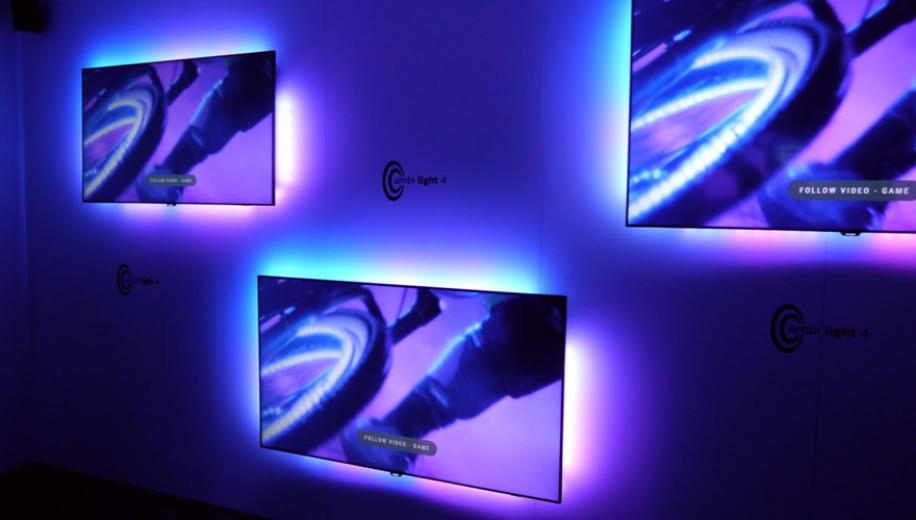



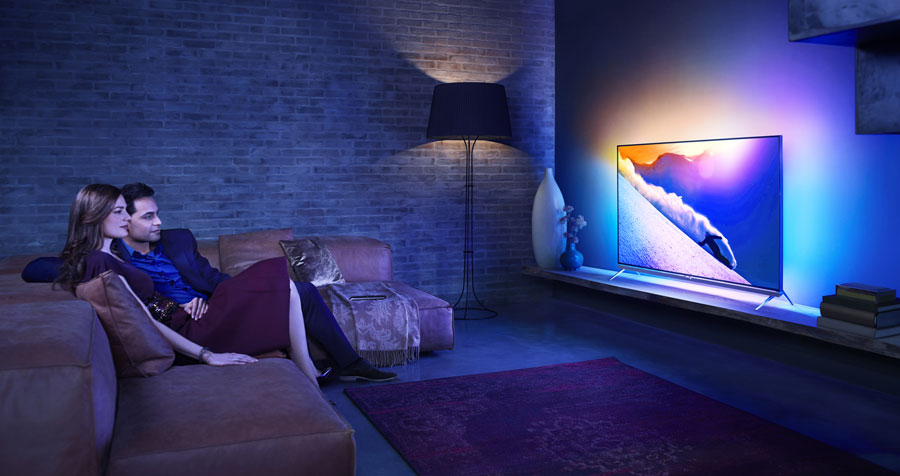
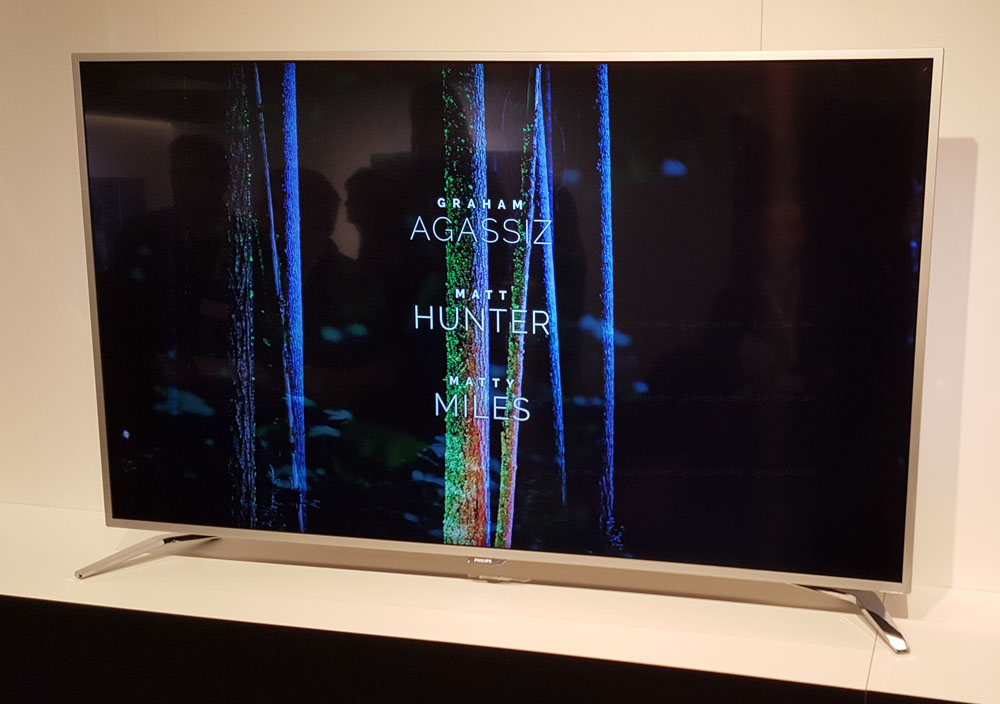
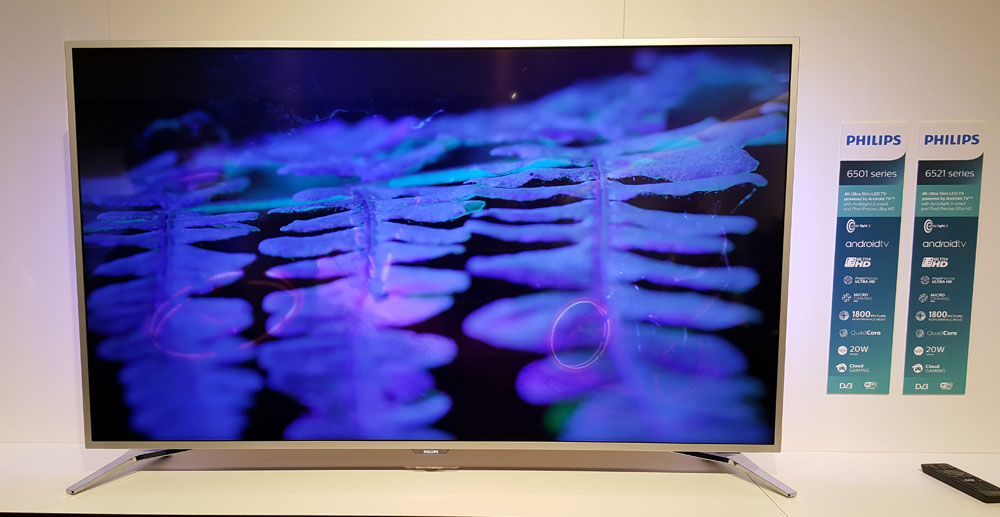
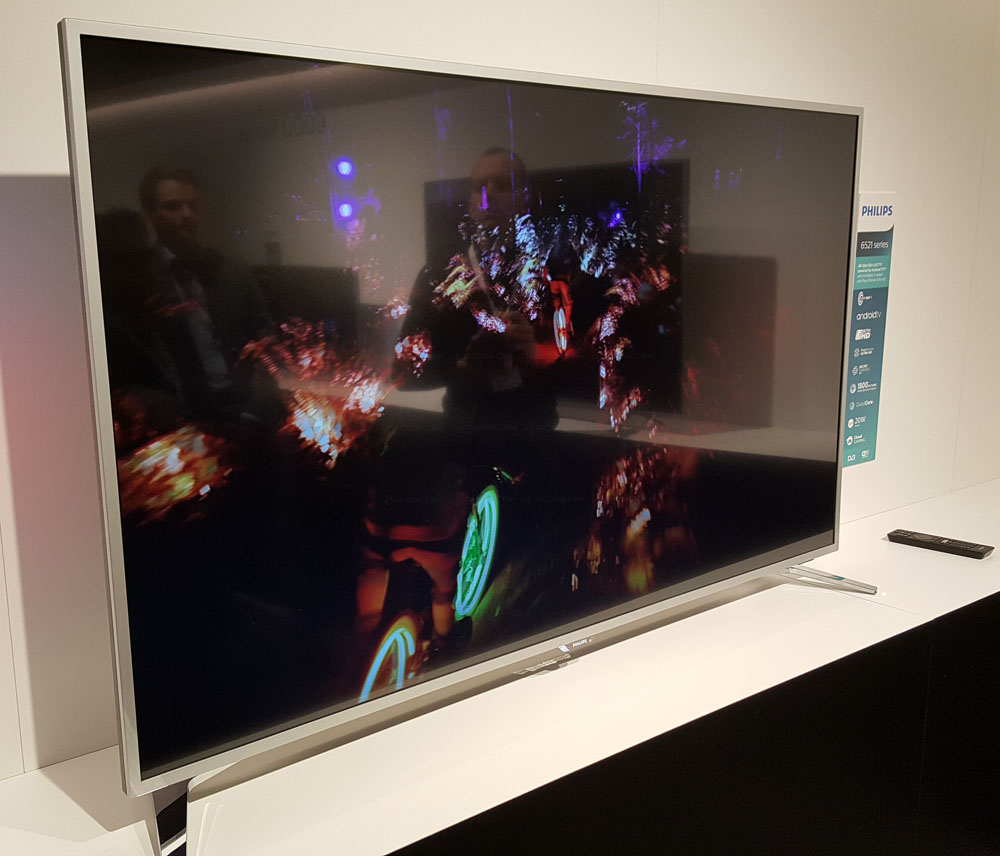
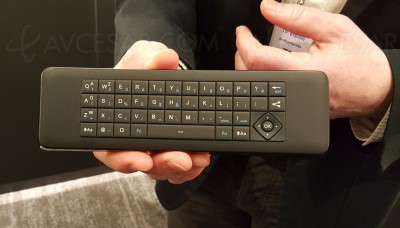
 que deve de ter um preço aproximado dos modelos do ano passado e já suporta o HDR 10 que vai ser o mais usado.
que deve de ter um preço aproximado dos modelos do ano passado e já suporta o HDR 10 que vai ser o mais usado. vamos ver a que preços vem a 7601
vamos ver a que preços vem a 7601